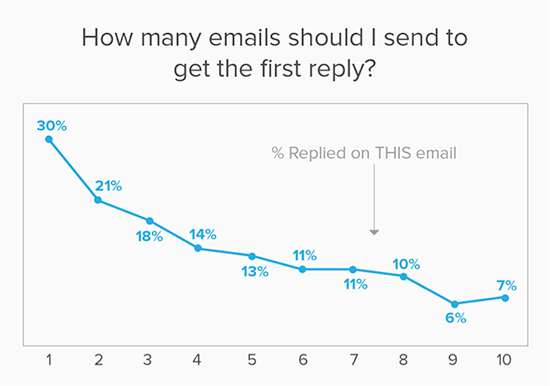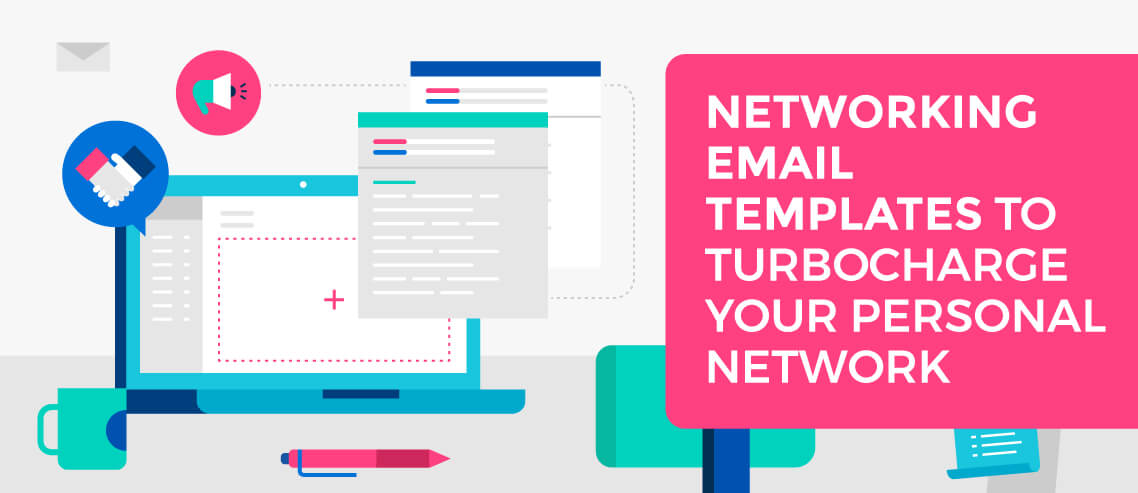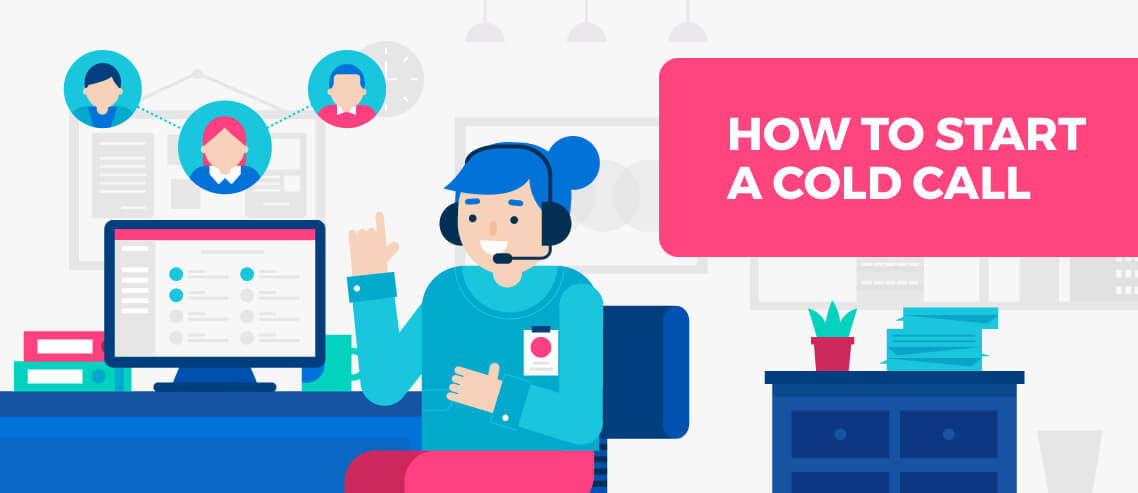7 Killer Email CTAs to Try Before Asking for the Sale

Contents
Outreach is good. Making a connection is even better. But both are just a precursor to your ultimate goal: you want the prospect or customer to do something. Subscribe, download, sign up, purchase, share, and so on.
Your call-to-action, then, becomes all-important. An email without one is meaningless.
An email with a weak one is only marginally better.
And email with the wrong call-to-action at the wrong time is damaging to your brand and reputation.
It’s got to be right.
That’s what it’s all about, the conversion. But if we know anything about marketing and email marketing in particular, it’s that you can’t just write to someone out of the blue and ask for the sale. You’re not going to get it.
Prospects and leads need to be nurtured. Wooed. Persuaded and convinced. And ideally, you need to build up to the “big” ask with a series of smaller, almost insignificant asks.
The blueprint is to build up to it with a series of simple CTAs that are easy to say ‘yes’ to, because each ‘yes’ you get – no matter how seemingly small and insignificant – makes getting the big one that much easier.
Let’s consider the effectiveness of sending more than one email in the first place. Here’s what the stats tell us:
- 70% of sales emails stop after the first send. Be different.
- There’s a 21% chance you’ll get a response to your second email if the first goes unanswered, and 25% overall if you keep sending them.
- About 90% of emails are opened and/or replied to on the day they are sent, so don’t wait too long before you follow up.
- 80% of sales require about five follow-ups after making first contact, but 92% of sales reps stop at 4 or less.
When it comes to email and sales, it most definitely pays to send more than one, and you’ll see the most success sending five or more follow-ups.

That said, each email should not be a carbon copy of the original. You need to mix it up. And once you get that all-important first reply, you need to send a series of different emails with several different CTAs. Why?
You’ve got to build to the sale to get the sale. Ask too soon, and you’ll scare them away. Prospects and leads can be very skittish. Reach out. Follow-up. Take it slow.
The Call-to-action
Before we get into the seven killer CTAs to try before asking for the sale, let’s take a quick moment to review CTAs in general. They are without a doubt the most important part of your email. Without a strong one, you’re just wasting everyone’s time.
So what makes a call-to-action strong?
- Use a strong, active verb like reserve, read, download, purchase, discover, start, subscribe, unleash, and so on. But a verb by itself won’t convert as well as a powerful phrase using that verb. And don’t ever go with the “Click Here” CTA. It’s beyond lazy and worthless.
“So, what button copy should you use? Click here, buy now and order now are a few call-to-action texts that you see around. I’ve found that generic phrasing, like the words above, don’t really impact conversion rates by much.” ~Neil Patel
- Evoke an emotion. People respond to both positive and negative emotional triggers. Pick one that is relevant to your brand or product.
- Create enthusiasm.
- Give them a “reason why.” Make it clear what they get, and why that’s important.
- Leverage the fear-of-missing-out (FOMO) on something by creating urgency (limited time) and/or scarcity (limited quantities).
- Try using the first-person “I,” “me,” “my,” or “mine.”
- Experiment with negative space – the empty, white space around your button – as well as its color and placement in your email.
- Test, test, and test again.
Besides asking for the right thing at the right time, testing your CTA is the next best thing you can do to improve your conversions. Luckily, most email marketing solutions like Mailshake and MailChimp have built-in A/B test functionality. And if not, you can always create your own A/B test by sending two different emails to two different lists and simply comparing the results.
The proof is in the pudding. A/B testing your calls-to-action reveals what works better:
- Using a CTA button rather than a CTA link increased click-throughs by 28%. It plays off affordance: when we see a button, we instinctively want to click/push it.
- “Start my free trial” (1st-person) increased the click-through rate by 90% over “Start your free trial.”
- Whirlpool got a 42% increased CTR by dropping to one call-to-action from four.
And that’s just the tip of the iceberg. But what CTAs should you try?
The seven calls-to-action outlined below can help you get the big one for two main reasons: commitment and reciprocity. Let’s discuss those for a brief moment.
The Principle of Commitment
Okay, so you know best practices, you know to keep sending emails until you get that first response, and you know what and how to test.
But let’s get back to our main idea: ask for several smaller things before you go for the big ask (the sale). Build up to it. Get them to say ‘yes’ as many times as possible, and you’ll likely get the only ‘yes’ that truly matters, too.
Why? Human psychology. It’s just how we’re wired.

The principle of commitment tells us that we want to be consistent. We want to follow through once we’ve agreed to something or someone. No one wants to be seen as reneging on a promise or commitment. And that can work in your favor.
“If people take a small action or pledge, they are more likely to take another action and follow through.” ~Brady Josephson
So, if you can get them to complete a market research survey, or download a free resource, or comment on your latest blog post, they’ve made a commitment to you and your brand. They’re much more likely to agree to the next CTA, and even more likely to agree to the one after that.
Get the small commitment, then another, and another.
The Principle of Reciprocity
Ask yourself: how much do you enjoy being indebted to someone in some way? Whether it’s money, a favor, or the generic “one,” we don’t like owing anything to anyone. Most of us go out of our way to pay it back so that we return to an “even” state.
That’s the principle of reciprocity at work.
By giving your prospects something, you create a feeling of obligation in them to return the favor.
“Give something: give information, give free samples, give a positive experience…” ~Robert Cialdini
If you give away free tools, useful information, samples, templates, or anything else of value – even something as inexpensive as a pen or sticker – you’re generating positive feelings towards your brand, and generating reciprocity. Your leads and prospects will want to “pay you back” when you eventually ask for the sale.
Now, this idea, as well as the principle of commitment, should not be misused. In his landmark 1984 book Influence: The Psychology of Persuasion, Robert Cialdini named them two of his principles of persuasion. But they’re often known as the weapons of persuasion because of their effectiveness. Use them, but use them responsibly.
Here are seven CTAs that are valuable, useful, effective, and responsible. No trickery, gimmicks, or underhanded tactics needed.
1. Click a link to a valuable or useful post
If you think about your sales funnel, it probably follows the same basic plan as every other one. You need lots of leads to feed into the wide top. This CTA is just the thing for prospecting.
You could just throw every name and email address you manage to find via black and white hat methods into your funnel, but that’s a waste of time.
Instead, send an email with an invitation to check out a blog post, article, or video relevant to your niche and useful to your ideal customers in some way.
You’ll be able to instantly know who’s interested in a particular service, product, tool, or topic based on who clicks through and who doesn’t. You’re qualifying your leads and making the first step towards commitment and reciprocity.
2. Offer something to them for free
Next, you’ll want to up the ante and give them something of value for free.
So, encourage them to download and/or share your ebook, case study, white paper, template, how-to guide, and more. Make sure it’s from you and branded to build trust and awareness while increasing the feeling of commitment and reciprocity in them.
This works. Extremely well. The Hare Krishnas handing out flowers at airports and train stations? They’re using it. Booths giving away cookies or pens at a conference? So are they. Give them something for free, then ask for something later (a donation, a sign-up, or down the road, a purchase).

3. Complete a quick survey
When designing or tweaking a product or service, you need to know what real people think, want, need, and find frustrating. That kind of voice-of-the-customer data is invaluable.
At this point, you should have identified those individuals interested in your industry or niche, and those starting to feel indebted to you based on the first two CTAs.
Now, send a third email inviting them to complete a brief – very brief – survey under the guise of “market research” (which it is, of course, but it also moves them closer to a sale). You can even offer a tiny reward of some sort for doing so to add even more to their reciprocity.
As a bonus, a simple survey can help you zero in on a need or pain point of individual leads that you can solve with your product.
Tools like SurveyMonkey, Google Forms, or Survey Anyplace make it easy and affordable for everyone. There are enough options out there to match the requirements and budget of everyone. Do some exploration, try a few, and go with what works best for you.
4. Leave a comment / Participate in a TwitterChat
This one is simple but no less powerful. In order to identify those moving through the funnel, provide yet another useful link, but this time specifically suggest they leave a comment on it. Tell them you’d love to hear their thoughts on your latest blog or guest post.
Alternatively, invite them to join an upcoming TwitterChat you’re hosting. Flatter them a little by adding that you’d love to get their insight on topic X.
Either way, those that say ‘yes’ are demonstrating even greater engagement and interest in you and your brand, product, service.
5. Subscribe to newsletter / Follow on Twitter / Like on Facebook
This is an extension of #4. A short email with a quick update or reminder, followed by an explicit request for them to subscribe, follow, and/or like can provide further evidence of commitment, engagement, and demonstrated interest.
Be sure and highlight the benefits to them of doing so. What makes your newsletter special and worth their time? What do you typically share on your Twitter feed? Why is your Facebook Page the place to be? Answer those questions, and take note of who clicks the button. They’re into you.
6. Request a free demo
If your product or service allows for it, this CTA at this stage can practically seal the deal.
They’ve demonstrated their interest – they’ve said ‘yes’ to several if not all of your CTAs. Now, encourage them to request a free demo of your product/service in action. Make clear the benefits to them to help them decide to go for it. And then provide a personalized demonstration of your product/service making their business or personal life or website better, stronger, faster, easier, and so on.
This is an opportunity to overcome their objections and remove friction by sharing social proof (another of Cialdini’s six weapons), trust indicators, and more.
7. Sign up for free trial or sample
The last CTA before asking for the sale is to ask them to sign up for a no-obligation free trial or sample. Get them to take action. Highlight the benefits. Make onboarding ridiculously fast and easy. Offer to do most or all of the work for them. Give them tips and tricks to get the most out of it.
Nudging someone from free user to paid customer isn’t a given, but it is much, much easier because of the commitment they’ve already made, and the reciprocity they’ll feel towards you.
Once you’ve got them through these 7 calls-to-action – which correspond to the core stages of the sales funnel – they’re finally ready to be sold.
Crafting the perfect call-to-action takes practice and revision (and testing, of course…always be testing), but an optimized CTA combined with a well-crafted cold email outreach campaign will deliver results.
Build to the sale to get the sale.
Images: Pixabay





